Description
What Is a 2.4 GHz Omni Outdoor Antenna Wifi Antenna?
The 2.4 GHz Omni Outdoor Antenna style CTRF-ANTENNA-FB-2450-20200-N is an Omnidirectional antenna 2.4 GHz wifi antenna with an IP67 rated waterproof grade fiberglass antenna dome 2.4G antenna manufactured by C&T RF Antennas Inc.
The Wifi 2.4GHz antenna Omni Outdoor Antenna is an Omni dipole antenna design for wireless network applications.
This Omni Outdoor Antenna same style Omni Dipole Wifi Antenna Waterproof Fiberglass Antenna also has a 3G 4G LTE Antenna Omnidirectional Dipole Fiberglass Antenna type for your choice. Also, you can define the Omni Outdoor Antenna style with other frequency bands you need such as Lora 433MHz, 868MHz 915MHz, GSM, NB-IoT, UMTS, LTE 4G 5G NR, and so on.
2.4GHz wireless communication
2.4GHz Wireless communication is generally communicating through two devices, with a maximum rate of 2 Mbps and strong anti-interference. Generally, 1 pair 6 can be performed, typically 1 received, 6 transmissions.
Comparative analysis of common 2.4GHz wireless technology
With the continuous development of society, the advantages of wireless have gradually appeared.
Such as wireless communication coverage is large, almost unreasonable;
Wireless communication can be settled at any time, increased link, installation, and expansion of the link at any time;
Wireless communication can be built quickly (10 minutes) to achieve temporary, emergency, and disaster prevention and communication purposes;
Wired communication has geographical restrictions and a longer response time.
Wireless communication is exceeded in terms of traditional wired communication in terms of reliability, availability, and destruction, especially in some special geographic environments, more advantageous.
With the maturity of wireless technology, industrial, medical, and other industries have also begun to use 2.4G communication, while 802.15.4, ZigBee, and Wi-Fi are also more applications.
ZigBee and Wi-Fi each have a significant feature, and many of the characteristics have complementarity, combined with the two wells with good application prospects.
What is the difference between ZigBee and Wi-Fi?
Comparison of ZigBee, Wi-Fi, Bluetooth, and several wireless technologies
Wi-Fi has been used in batches, mainly in the family and office environment for local area networks such as PC.
After 3G deployment, there will be some applications of 3G + Wi-Fi. China Telecom’s Tianyi includes this part. It is foreseen that many embedded Wi-Fi devices will also be more popular with networks, such as Wi-Fi POS and Wi-Fi weights in the supermarket.
Nowadays, industrial environments are also more, mainly in the Wi-Fi access of serial port equipment for industrial wireless data acquisition systems.
The equipment of ZigBee and IEEE802.15.4 is mainly concentrated in the:
Wireless sensor detection, low-grade control in industrial;
Personal monitoring instrument, low-power wireless medical equipment;
High-end toys;
Electrical network and control;
Wireless consumer equipment;
HVAC and light control, etc.
Current batch applications are mainly in asset tracking, logistics management, intelligent lighting, remote control, medical care, and remote meter reading systems.
How does 2.4GHz wireless technology solve the problem of crowded frequency bands?
802.15.4 use DSSS and OFDM using DSSS, 802.11. In actual use, we tested the office building, factory, and other environments. Communication is more blocked and distance problems and congestion have not impacted too much.
802.15.4, ZigBee technology is the most ideal choice for the WSN network, with low power consumption, but how to achieve low power consumption, what factors need to consider?
IEEE 802.15.4 defines an optional MAC layer superframe structure, superframe includes active and non-active (inactive) two parts in non-active portions, and the device can enter low power mode (sleep state);
The active part is divided into a competitive period and a non-bidding period.
The competition period is provided for the equipment used by the CSMA-CA method. The non-competitive period consists of several guaranteed time slots, providing some equipment that needs to retain certain data bandwidth.
The superframe structure reflects a major feature of IEEE 802.15.4 low power consumption.
The introduction of a non-active period limits the opening time of the transceiver between the devices, which makes them in asleep when the countless transmissions, thereby greatly saving power. expenditure.
ZigBee equipment is divided into full-featured devices and streamlined features, and streamlined features relatively full-featured device protocol stacks simple and memory smaller, only with a full-featured device and full-featured device has a complete IEEE 802.15.4 protocol function.
In addition to any node within its transmission, two devices can be combined, which can constitute a mesh network, a star network, and a tree network.
The low-power system has a power relationship in addition to the power considering the transfer.
What is the bandwidth of the ZigBee signal?
The underlying ZigBee uses IEEE802.15.4, which means that the physical bandwidth is the bandwidth of IEEE802.15.4 is 250kbps.
There is also a difference in physical bandwidth and effective data rate. For ZigBee, the data rate should also consider the topology, data routing relationship, and data volume in the network.
These factors must be fully considered in the actual application. Because there are many factors involved, actual calculations cannot be given here.
Experience and routing have the greatest impact on data rates. Each additional level route increases from 100ms to 200 ms. So
ZigBee is not a real-time network. Secondly, the network’s concurrent data has a large impact.
ZigBee is suitable for low-speed sensing applications, and the actual bandwidth should consider the actual situation of the network.
The Omnidirectional wifi antenna Omni Outdoor Antenna 2.4GHz is available at C&T RF Antennas Inc, the wifi antenna and fiberglass antenna manufacturer in China.
We provide the RF antennas with other antenna radio frequencies such as 169MHz, 230MHz, 315MHz, 433MHz, 868MHz, 915MHz, Lora, VHF&UHF, NB-IoT, GSM, Wifi 2.4GHz, 5.8GHz, 2G 3G 4G LTE, GPS, 5G NR, UWB, etc.
C&T RF Antennas Inc provides the 2.4 GHz antenna with many antenna types such as Dipole Antennas, Whip Antennas, Marine Antennas, Router Antennas, MIMO Antennas, PCB Antennas, FPC Antennas, Spring Antennas, etc.
Contact us for more details on the 2.4 GHz Omni Outdoor Antenna Wifi Antenna such as 2.4 GHz Omni Outdoor Antenna price, 2.4 GHz Omni Outdoor Antenna datasheet, 2.4 GHz Omni Outdoor Antenna inventory, or the other internal & external 2.4 GHz Omni Outdoor Antenna types.
2.4 GHz Omni Outdoor Antenna Wifi Antenna Specifications
2.4 GHz Omni Outdoor Antenna Wifi Antenna Electrical Specifications |
|
| RF Antenna Type | Omni Dipole Wifi Antenna |
| Model | CTRF-ANTENNA-FB-2450-20200-N |
| Frequency | 2400-2500MHz |
| Gain | 5dBi |
| VSWR | ≤2.0 |
| Impedance | 50 Ω |
| Polarization | Vertical |
| Horizontal Beam-width | 360 Degree |
| Connector | N-type |
| Max Power | 50W |
| Radiation Pattern | Omnidirectional |
| Lightning Protection | DC Ground |
| 2.4 GHz Omni Outdoor Antenna Wifi Antenna Mechanical Specifications | |
| Dimension | 20x200mm |
| Operational Humidity | <65% |
| Radome Material | Fiberglass |
| Storage Temperature Range | -40~+85°C |
| Working Temperature Range | -40~+85°C |
| Color | Gray |
| Antenna Form | Single Band |
| Mounting | Screw |
| RoHS | Compliant |
| Applications | ISM/SCADA/Utilities, IoT/NB-IoT/LoRa, Wi-Fi |
2.4 GHz Omni Outdoor Antenna Wifi Antenna Feature
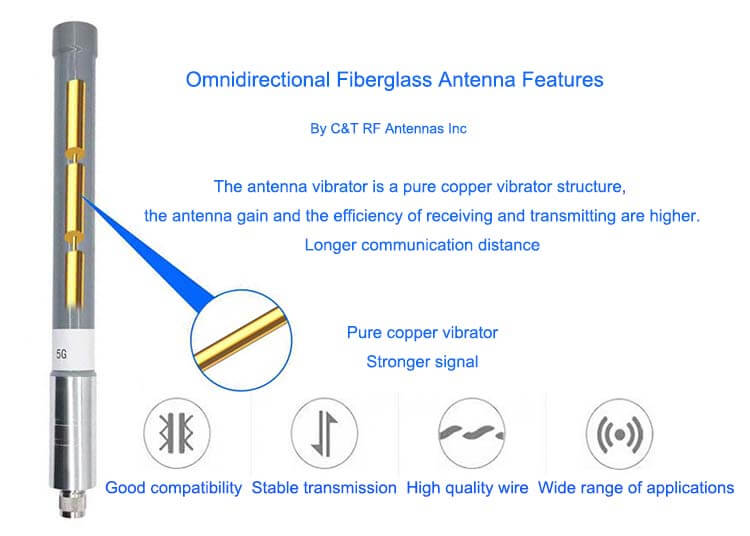
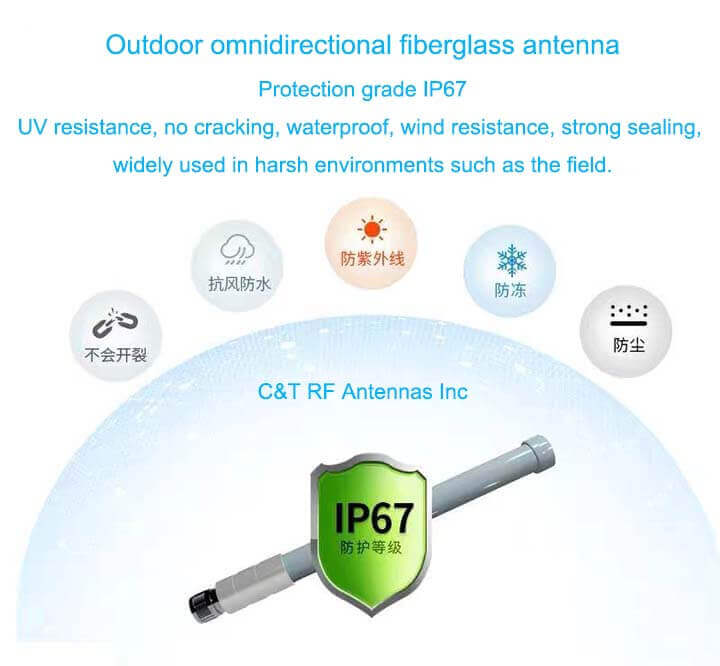
2.4 GHz Omni Outdoor Antenna Wifi Antenna Installations
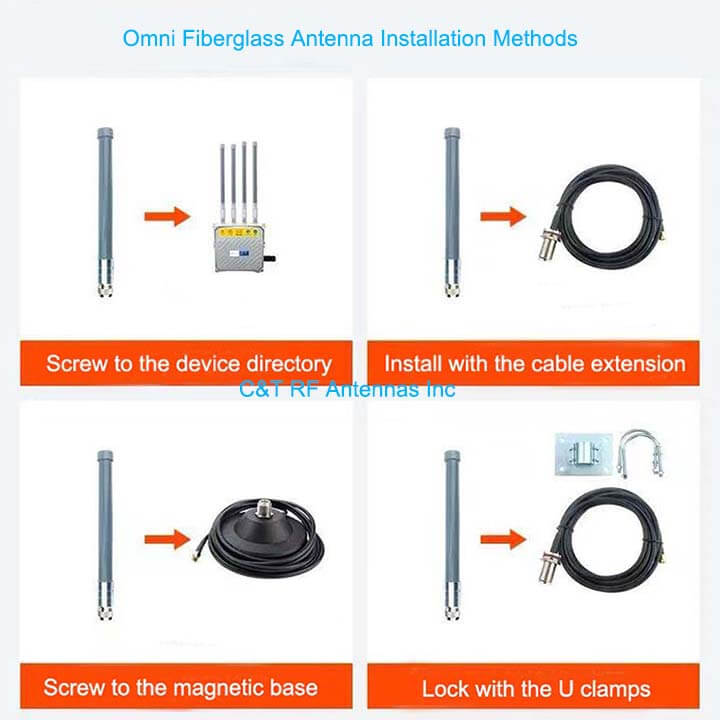
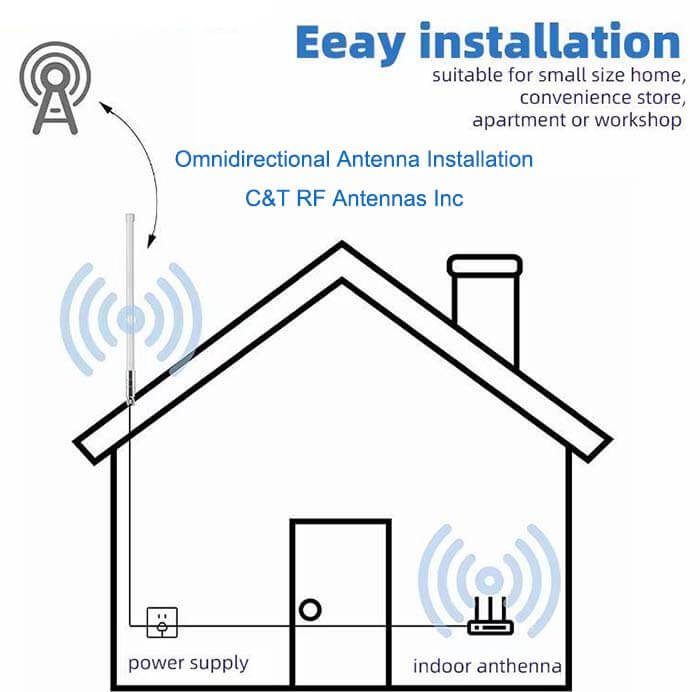
2.4 GHz Omni Outdoor Antenna Wifi Antenna Applications
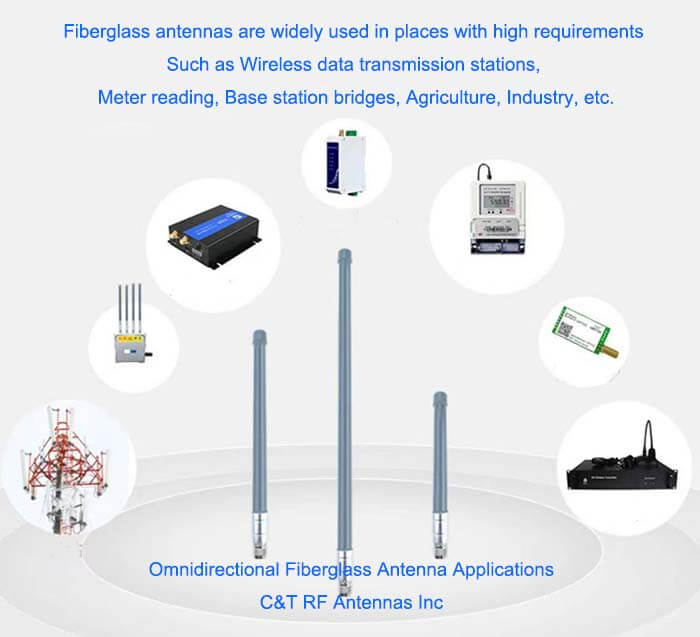

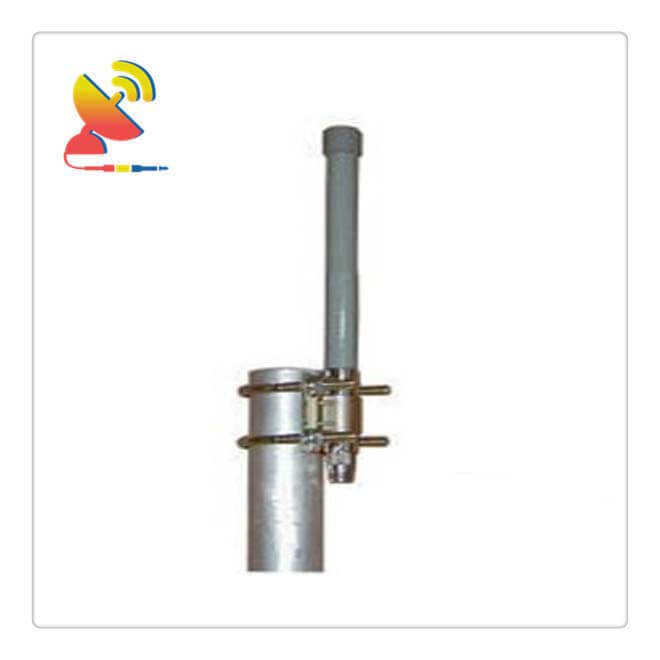
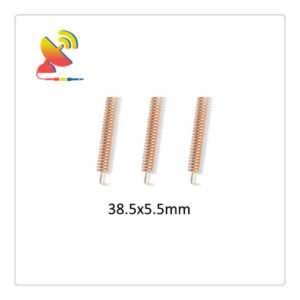
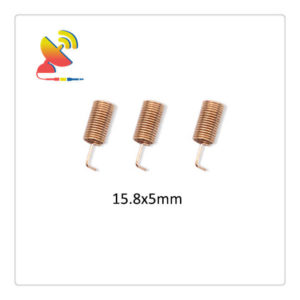
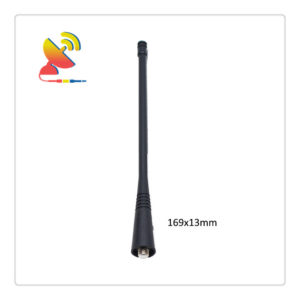
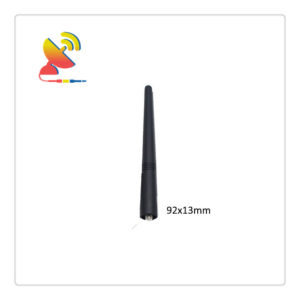
Reviews
There are no reviews yet.